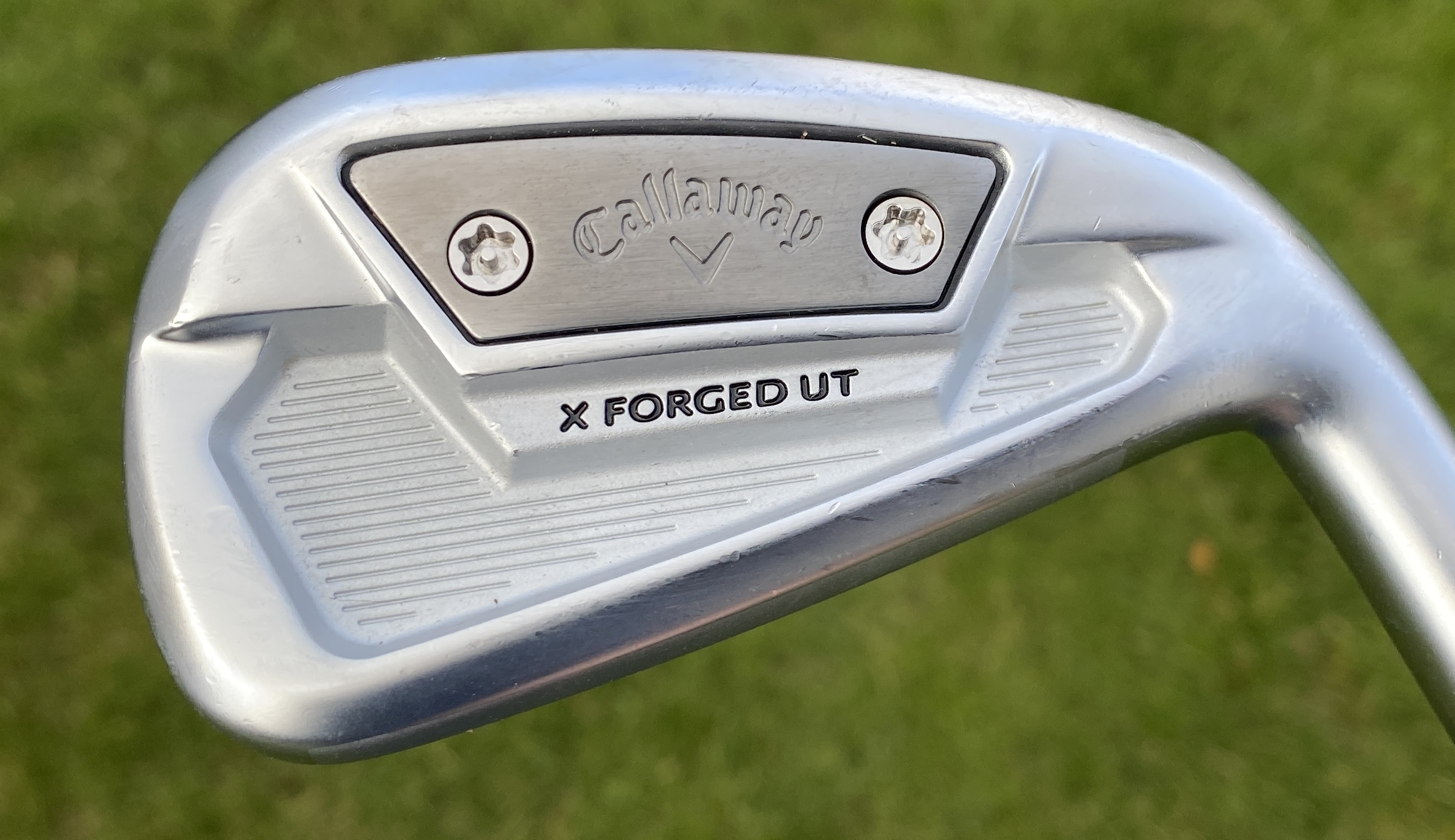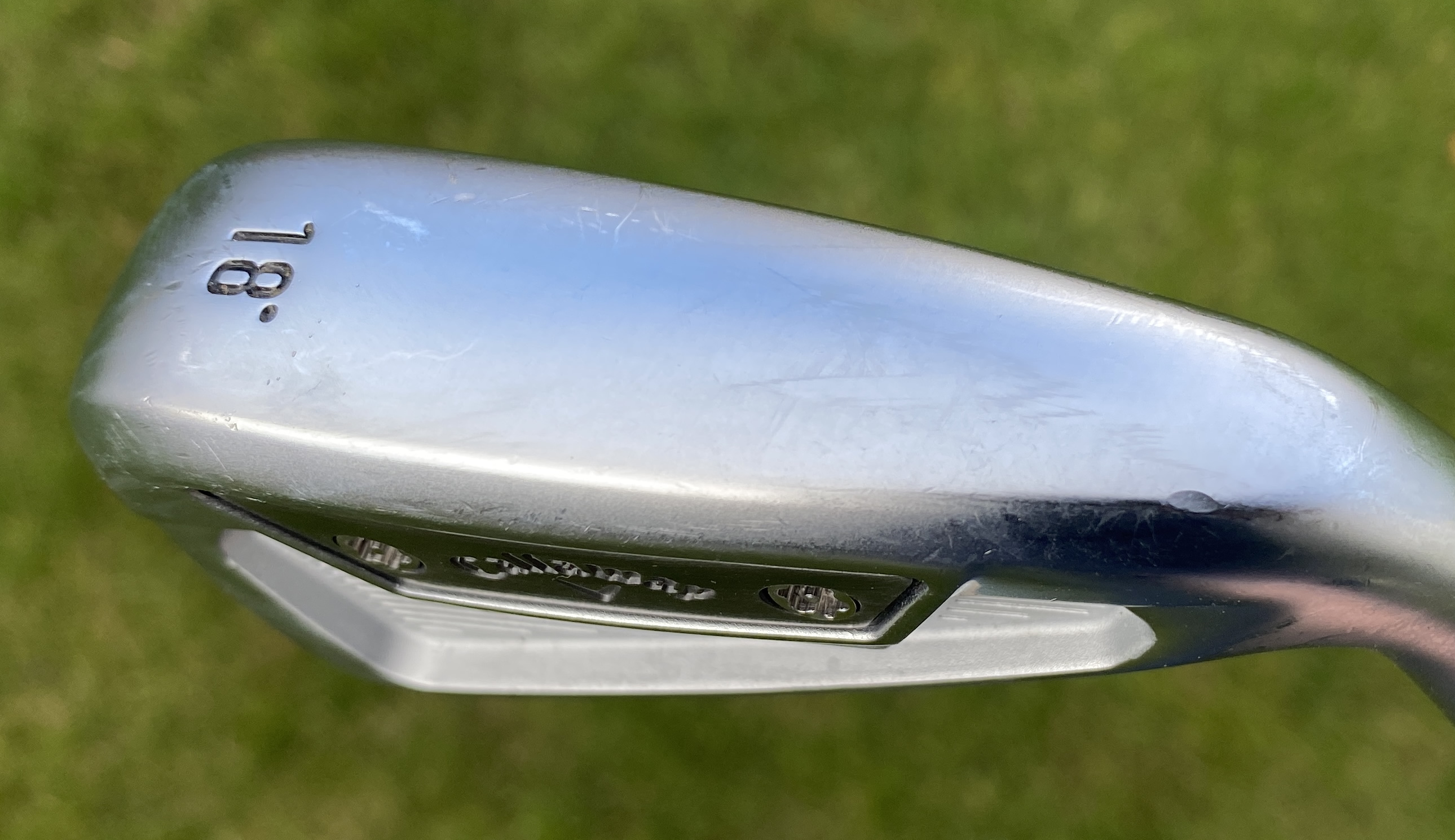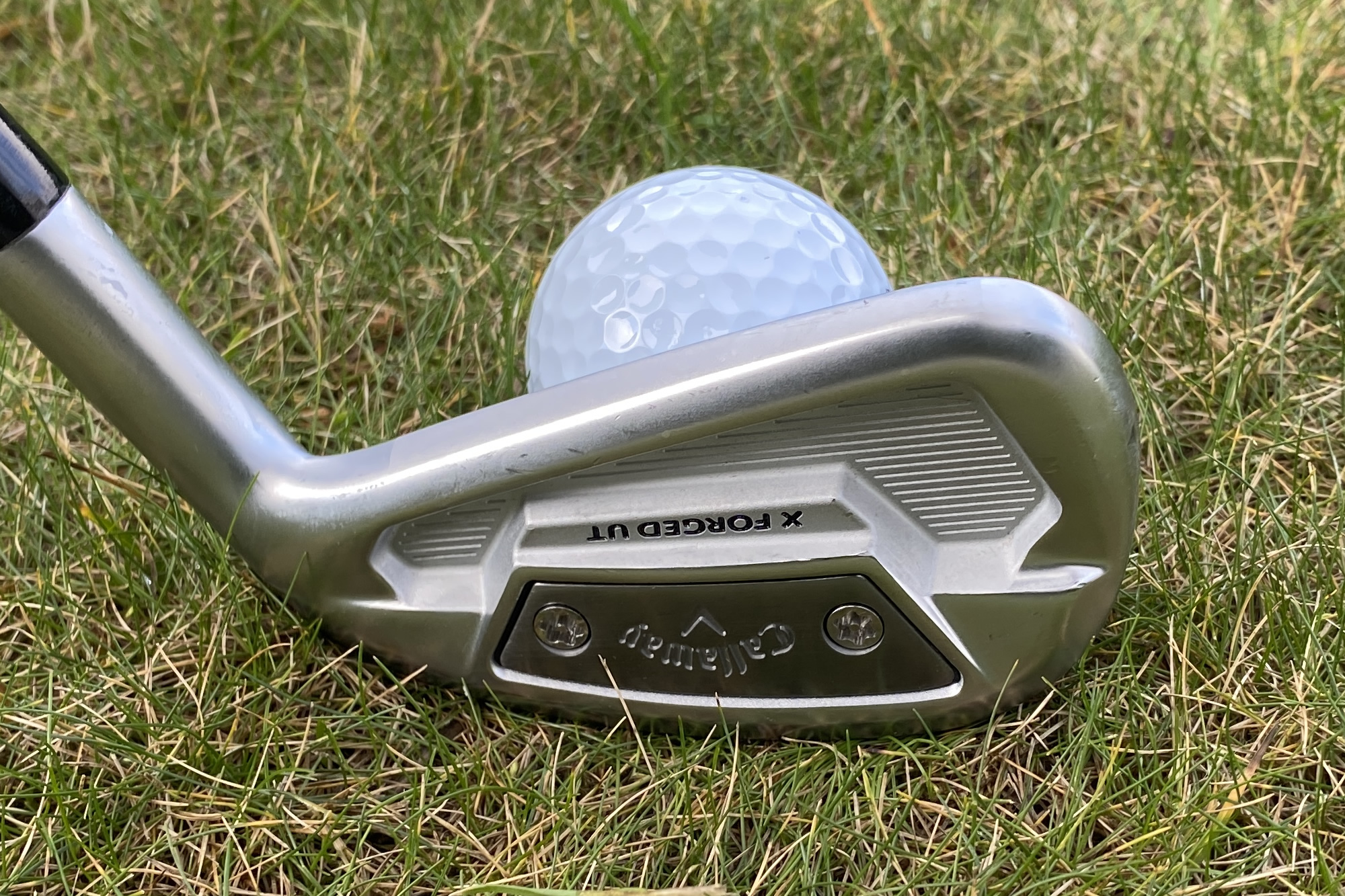Callaway X-Forged UT Utility Iron Review
Callaway X-Forged UT utility iron blends forged feel with AI face in blade style design.

Callaway X-Forged UT Utility Iron offers better players a blade style long iron with good feel and classy looks. It's quite a compact head which means it is not overly forgiving, but it does offer more margin error than most at this size.
-
+
Good feel
-
+
Decent forgivenesss for blade style
-
+
Light steel shaft option
-
-
Quite compact look at address
Why you can trust Golf Monthly

Callaway X-Forged UT Utility Iron Review
The Callaway X-Forged UT Utility Iron is a hollow headed iron that aims to increase driving iron forgiveness in a compact head aimed at better players.
Callaway always make good forgings and when they combine them with technology then you get the best of both worlds. The tech in this case is the Flash Face Cup that is designed using Callaway’s AI computer to optimise performance and forgiveness. The leading edge of the face wraps around the front of the chassis to improve ball speed on low face hits, which makes the relatively shallow profile Callaway X-Forged UT easy to launch the ball.
The forged 1025 carbon steel body is hollow and features a tungsten weight on the rear to draw the CG back to assist with the launch. Whilst the head is quite compact, this design does mean that the curved trailing edge is visible at address on the 18° 2-iron pictured here. This does make the sole a little wider than most blades in the centre area which will help with the forgiveness.


There also also 21° 3-iron and 24° 4-iron versions available too, which may have a different look at address, but it is good to see some options here for those who have a set of blades and are looking for more forgiveness. The X-Forged UT will blend in with most sets of blades thanks to the brushed chrome look. Why not also check out some of the other top spec driving irons on the market on our guide to the best utility irons.

You can get the Callaway X-Forged UT Utility Iron with a True Temper Project X U steel shaft or HZRDUS Smoke Black graphite shaft. We tested with the steel shaft and it was surprisingly light at 110g in stiff, so much so that it almost felt like a graphite shaft and will be a good option for most better players.
The flight from the X-Forged UT was mid-height and the club was easy to launch well for this style of driving iron with good feel. The nature of the compact head means that it will be easy to shape shots if you need to, so this will appeal to single figure players who have a set of Callaways and would like a blade style driving iron to put in the bag. It’s quite an understated look but there is a lot going on in X-Forged UT design that combines modern technology with classic looks to create a good quality utility iron.
If you do decide to buy one of these fantastic Callaway X-Forged golf clubs, first look at one of our Callaway coupon codes.
Get the Golf Monthly Newsletter
Subscribe to the Golf Monthly newsletter to stay up to date with all the latest tour news, equipment news, reviews, head-to-heads and buyer’s guides from our team of experienced experts.
Martin Hopley is one of the foremost UK equipment reviewers with over 20 years' experience. As the former founder of Golfalot.com he was an early pioneer of online reviews and has also been a regular contributor to other titles. He is renowned for his technical knowledge and in-depth analysis, which he now brings to Golf Monthly.
-
 What Went Wrong For Rory McIlroy At The Masters
What Went Wrong For Rory McIlroy At The MastersMcIlroy dropped four strokes in three holes to almost play himself out of the tournament on Thursday evening
By Elliott Heath Published
-
 Rory McIlroy Skips Media After Late Masters Collapse
Rory McIlroy Skips Media After Late Masters CollapseRory McIlroy skipped talking to the media after his Masters first round
By Mike Hall Published
-
 Watch The Bizarre Moment Max Homa’s Shot Hits Masters Caddie On Backside
Watch The Bizarre Moment Max Homa’s Shot Hits Masters Caddie On BacksideDon't talk to Max Homa about caddies right now - it's a sore subject
By Michael Weston Published